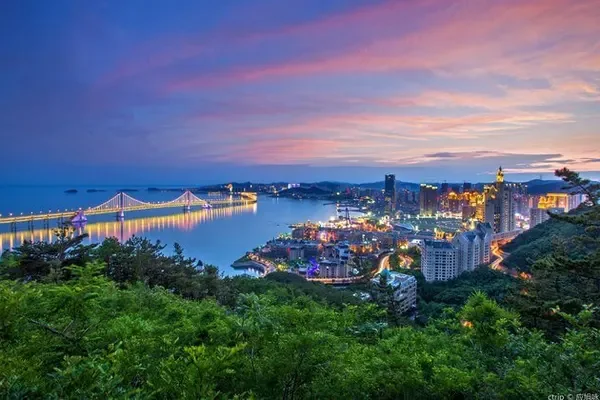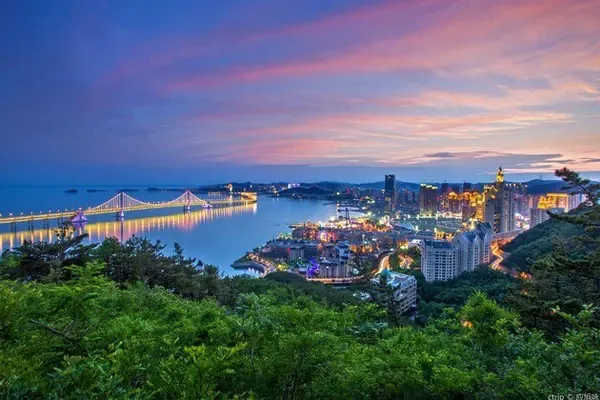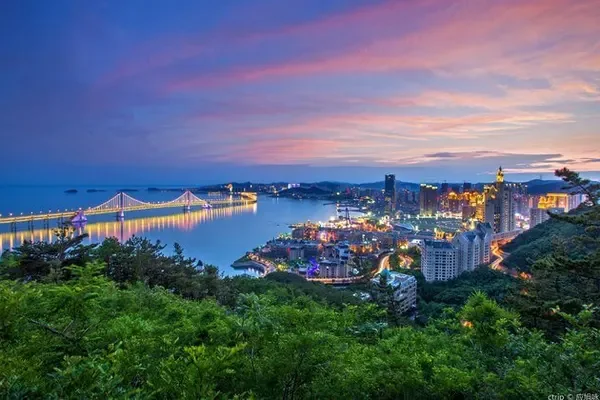During this visit to the famous passes of the Great Wall, we saw the well-renovated Great Wall that has become a famous tourist attraction, the original Great Wall known as the wild Great Wall, and the rebuilt Great Wall pass.
During these six days, we saw the Qinhuang Ancient Post Road in Jingxing County. The ruts and horseshoe prints on the ancient post road were clearly visible. The two ancient locust trees witnessed the prosperity of the Qinhuang Ancient Post Road. The times advocated that the books are on the same track as the carriages, and the unified weights and measures laid the foundation for the unification of China; the Feiluyuan Iron Bridge we passed was built in 1904. It was designed by the Germans and built using steel of the same quality as the Eiffel Tower in France. It used to be the only way from Beijing to Taiyuan, and it was once occupied by many invaders. So far, there are still many bullet holes on the bridge, which shows the role of this iron bridge in more than 100 years. Strategic role; we see Niangziguan in Pingding County, Shanxi, which is a famous pass of the Great Wall of China. I think back to the time when Princess Pingyang led the Women’s Army to guard the border in the Tang Dynasty. The Yanmen Pass is located in Daixian County, Xinzhou, Shanxi. It is also an important pass on the Great Wall. It is the first of the three outer passes. It is famous for its danger and is known as "the first pass in the world". In history, major historical events such as the Northern Expedition of Emperor Gaozu of the Han Dynasty, Zhaojun's departure from the fortress, and the Yang family general guarding the three passes in the Song Dynasty are all related to this; the Piantou Pass we see is located in Pianguan County, Shanxi Province. It is connected to Ningwu Pass and Yanmen Pass. Known as the "Three Outer Passes" of the Inner Great Wall, today's Piantouguan is only left with Pianguanmen and a section of the Great Wall to the west. The surrounding area of Pianguanmen is now surrounded by various commercial facilities, which seems to tell people the desolation of being ignored. The Qiankun Bay we saw is the Yellow River forming an "S"-shaped turn on the Grand Canyon of the Qin and Jin Dynasties, resembling a Tai Chi picture. Located at the junction of Shanxi and Mongolia, the Yellow River enters Jin from here, and the Great Wall inside and outside meets here. The Shanxi-Shaanxi-Mongolian Grand Canyon starts here, and the vicissitudes of the Loess Plateau are displayed here. Laoniu Bay is also the place where the Great Wall and the Yellow River shake hands; we see The Badaizi Great Wall in Bataizi is the meeting place of the four major civilizations; the Laoyingbao we saw was located in Pianguan County, Shanxi Province, and we only saw a remnant section of the Great Wall in Laoyingbao. There are various slogans; the Shahukou we saw is the northernmost point of Youyu County, Shanxi, and it is also the junction of Shanxi and Mongolia. , Coming to Shahukou reminded us of a popular song called "Zouxikou". Walking into the scenic spot and humming the ditty "Zouxikou" is really suitable for the situation; the Pingxingguan we saw is said to have disappeared due to the war. The Pingxingguan that was climbed was not built on the original site. The Pingxingguan Victory Memorial Hall is also one of the must-see attractions on the red tour. There are 115 steps at the entrance. In order to commemorate the Pingxingguan victory of the 115th Division of the Eighth Route Army, we stopped at Qiaogou, which is the main battlefield of the Pingxingguan Battle. When we arrived at the winding path at the foot of the mountain, it was here that we wiped out more than 1,000 Japanese invaders before we achieved the great victory at Pingxingguan. Encourage the anti-war spirit of the army and the people; although we can see the ruins of Daomaguan, we can see from the drone control screen during the aerial photography that there are still untouched buildings in the dense jungle. A section of the Great Wall that was destroyed, this section of the Great Wall is so complete, and the bricks and tiles on the wall are so well preserved. The villagers of Daoma Village under the Great Wall of Daomaguan are so simple. Under the sun, several villagers are seriously repairing the drainage ditches by the side of the road in the village, plastering and paving the road with stone slabs. When the photographer takes pictures of his sweaty back and During the working scene, I asked him why he didn’t take a break in such a hot day, and the villagers simply said without raising their heads: nothing, not tired; the Bauhinia Pass we saw is located between Juyongguan and Daomaguan. The combination of the three gates is called the inner three gates. We went to the south gate of Bauhinia Pass, on which there is a plaque of "Bauhinia Pass" on it. To borrow a sentence from an old professor in the same group: Bauhinia Pass is the Great Wall, but the grandeur of the past is gone, leaving only the pride and passion.
During the six-day itinerary, the Shanxi-Chahar-Hebei section saw so many famous passes of the Great Wall at once, which is really a rare opportunity. This trip to Mingguan of the Great Wall (Shanxi-Chahar-Hebei Section) can be said to be a historical tour, a cultural tour and a red tour, with a lot of experience and benefits.
1. Qinhuang Ancient Post Road

old post house

carriageway


The ruts are as deep as about 10 centimeters, which is the historical witness of the same track and the same text.


The resting place of Qinhuang hearse

2. The Iron Bridge

remaining bullet holes

The iron bridge is well preserved

The surface of the iron bridge is well treated, and it has maintained its original color for such a long time


I heard that on the west side of the bridge, there is a sign saying that it was built by a certain French company. I didn’t have time to go over to see it because of time constraints. What is the specific sign?

3. Niangziguan has kept the original stone road

Horseshoe prints on stone road

Private houses attached to the city wall of Niangziguang

The polished and smooth stone road in the city gate

Residential houses still inhabited in Niangziguan




inner city gate

4. Yanmen Pass

Yanmenguan North Gate

Wu Zetian created three characters for Yanmenguan: heaven, earth and man. This is the plaque inscribed on the Ningbian Building in Yanmenguan "Location", but the handwriting on the plaque can no longer be read clearly.

The "land" is composed of mountains, waters and soil, which means "the mountain is the head, the water is in the middle, and the soil is the base".

This is the plaque "Natural Danger" inscribed by Wu Zetian for Yanmenguan Tower. The word "Tian" is composed of Cao Tian Ge, that is, "the grass is the head, the field is the abdomen, and the Ge is the base". Unfortunately, due to time constraints, I did not find out how the word "人" is written. It is said that lifetime means "person"

This is the famous "No. 1 Pass in the World"


Yanmenguan Scenic Area


An old driveway is also preserved downstairs of Yanmen Pass

Yanmen Pass Scenic Spot



This is a false pass to lure the enemy to go deep.

4 The head off, tightly wrapped by the surrounding commercial facilities

The plaque is still clear

There is still a section of door beam left behind

5. Qiankun Bay


Three statues of Fuxi, Zhou Wenwang and Confucius are erected

Drone ready to take off

The drone controlled by the master took aerial photos of Qiankun Bay, showing us a more wonderful perspective



6. Laoniuwan is the place where the Yellow River and the Great Wall shake hands

Laoniuwan Scenic Area pulled out a banner early to welcome us.

Laoniuwan Ancient Town


Old Niuwan Castle

Laoniuwan Wanghe Tower is also a lookout post, which is used for reporting the enemy's situation and stationing troops.

What makes us feel even more amazing is that clapping our hands at a specific position in front of the Wanghe Tower can produce an echo, as if we heard the sound of a bird.

There is no door in this watchtower, so the enemy can only enter through this window with a soft ladder


Laoniuwan Ancient Town


Laoniuwan Farmhouse



7. The old city of Youwei, where the city wall was once buried by yellow sand

Comparison display board of Youyu Yellow Sand before and after treatment

Now it's Youyu in the oasis

Right Acropolis after renovation

8. The Bataizi Great Wall still has a Gothic church frame

after the church

Badaizi Great Wall

Standing shoulder to shoulder with the Great Wall, the stone pier with relief paintings recording Jesus' mission and crucifixion





9. In the old camp, the bricks and tiles of the city wall have long since disappeared, and what remains is this solid brick and soil



10. Killing Tiger Pass, the border between Jin and Mongolia, once a war border.





11. Pingxingguan was not built on the original site






Pingxingguan Great Victory Memorial Hall


The winding path at the foot of the mountain is the main battlefield of Pingxingguan Great Victory - Qiaogou


12. Daomaguan, because it needs a section of climbing, I didn't go up, but just watched the aerial photography with the photographer at the remnant Great Wall in the village

The ruined Great Wall


Villagers are laying drainage ditches

13. Bauhinia Pass



14. Qingxi Mausoleum


share:


